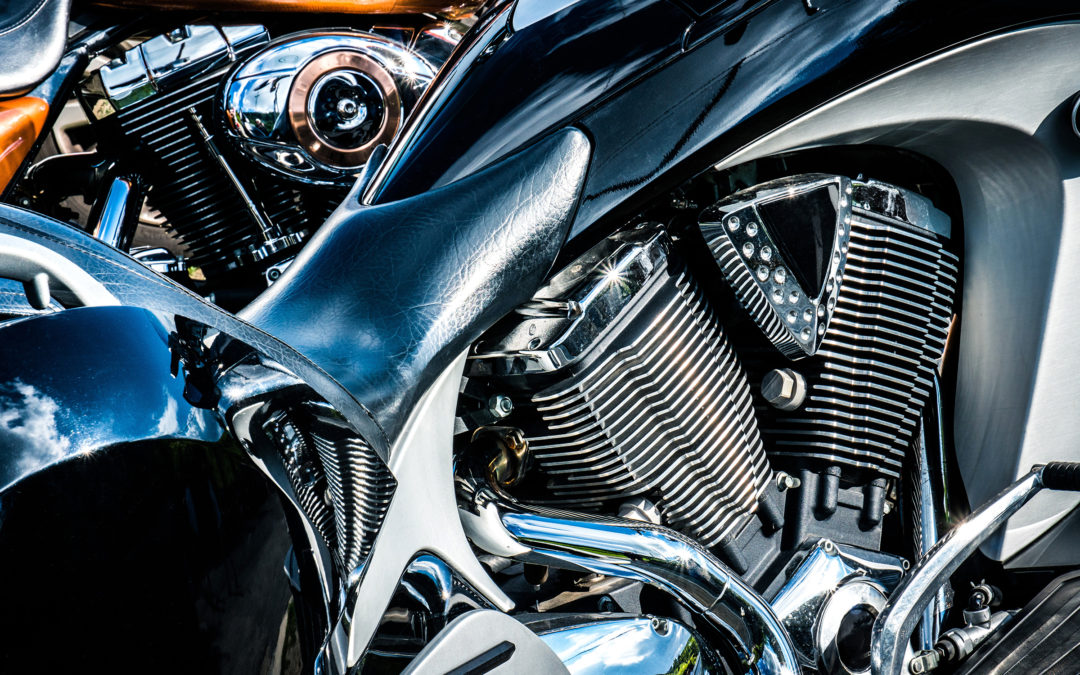By Roman Jimenez, CD-SV, MC, Biketailing Specialties, Miami, Florida, United States
Bikers of all types seek to understand the costs involved in motorcycle detailing and how to compare services from different detailers. There are professional detailers that offer services for cars, bikes, boats, and other vehicles, and those that specialize in knowing every inch of a particular type of vehicle. Detailing a motorcycle is like opening your car’s hood and asking a detailer how to treat every type of material inside and out. It takes a certain level of professional motorcycle detailing expertise to understand how to treat each material in every small and intricate surface.
As an obvious start, if you ride a cruiser, you will pay less than a trike, but more than a sport bike or sportster. Besides the plain difference in motorcycle sizes, there are three main factors to consider to understand the pricing of motorcycle detailing:
- Condition of each surface and the procedure needed to correct it.
- Protection you would like to give your bike to make the results last.
- Durability of that protection and maintenance you would like to have.
#1: Condition of Each Surface Dictates the Procedure Needed
Every motorcycle has its unique story etched into its materials, and unlike cars, motorcycles have smaller, more intricate surfaces. The paint tells stories of journeys taken, the chrome gleams with pride, and the aluminum components whisper tales of speed and precision. The different types of materials on a motorcycle range from glossy and matte paint to gelcoat, carbon fiber, chrome, aluminum and anodized aluminum, copper, powder coated, cerakote, leather, vinyl, plastic, and lexan. Costs are often a reflection of the materials’ conditions and the level of precision required for each.
- Hand Wash: This step may be overlooked by many, but when done incorrectly, it can cause a lot of damage that needs to be corrected in the future. Power washers or too much water pressure may be a faster process, but they could harm exposed controls, electronics and electrical components, sound systems, LEDs, and even the paint. If microfibers and other washing materials are not kept free of debris throughout the process, it may cause scratches easily. A more meticulous and trained professional motorcycle detailer may cost more for their time and effort but will be worth it in the long term.
- Polishing: The polishing step follows the wash for some surfaces. Pricing for chrome polishing and other polishes tends to depend on the severity of the damage that needs to be fixed. For example, chrome surfaces fall victim to surface rust, stains, scuffing, and light scratches, and although aluminum is a rust-proof metal, it is still prone to heat discoloration, water stains, and pre-rust.
- Paint Correction: Paint correction is necessary when a more aggressive agent is needed to correct light to medium-depth scratches, oxidation, and swirl marks. Paint correction removes scratches by slowly and carefully polishing away microscopic layers of the clear coat. Paint correction is the start of an artform to bring out that gorgeous reflective finish. This step is necessary before proceeding to long-term preservation solutions like ceramic coatings.
- Engine Decontamination: This process helps bring back the original color of a motorcycle engine, removing years of contamination, eliminating all the chemicals or foreign substances embedded in the engine finish that create stains and discoloration. The price depends on the level of treatment, procedure, and time to complete the task.
- Special Attention: Some cases require special attention and may add to the cost, such as deep chips and scratches, white wall tire stain removal, melted rubber removal, decal removal, tank badge removal, and more.
#2: Protection for the Long Haul
Detailing isn’t just about making your motorcycle shine for a day. It’s about safeguarding it from the elements and preserving that freshly detailed look. When discussing pricing, the level of protection the customer chooses plays a pivotal role.
- Ceramic Coating: Ceramic Coatings are the gold standard for motorcycle protection. It’s a thin, transparent layer that acts as a shield against UV rays, contaminants, and minor scratches. The price for detailing often increases with the application of ceramic coatings due to years of durability, along with the skill and time required to ensure a flawless finish. However, you can make certain ceramic coatings last forever, and it can save you lots of money with follow up treatments that are affordable.
- Wax and Sealants: While not as long-lasting as ceramic coatings, waxes and sealants offer good protection. They provide a glossy finish and can be more budget friendly. However, they require more frequent reapplication.
#3: Durability of Protection
Pricing is also influenced by how long the chosen protection will last. Here’s a breakdown of durability:
- Ceramic Coating: The durability champion. A well-applied ceramic coating can last several years, providing long-term protection against various elements. There are ceramic coatings that can last 1 year, 3 years, or even 5 years. Prices vary depending on the length of protection time. It’s an investment in the preservation of your motorcycle’s appearance, longevity, and future resale value.
- Wax and Sealants: These options offer good protection but require periodic reapplication, usually every few months. They provide a beautiful finish but demand more maintenance that will add up costs over time.
The Power is in Your Hands
Ultimately, the pricing of motorcycle detailing is tailored based on the services your bike needs and your preferences as a biker. Maybe your motorcycle’s paint is in great shape, and you’re looking for an affordable solution to keep it shining. Or, you could have a vintage motorcycle that deserves the royal treatment with a ceramic coating for long-lasting protection.
It’s a partnership between you and the motorcycle detailer, where the condition, the level of protection, and the durability of that protection are the variables that shape the final price.
In motorcycle detailing, the price isn’t just a cost; it’s an investment in preserving the soul of your bike. Whether you’re looking to give your daily rider a refresh or bestow your classic with the protection it deserves, the detailing process is a blend of art and science, all customized to bring out the best in your beloved machine. After all, your motorcycle deserves nothing but the best.
About the Author: Roman Jimenez, CD-SV, MC, is the President of Biketailing Specialties, located in Miami, Florida, United States.


